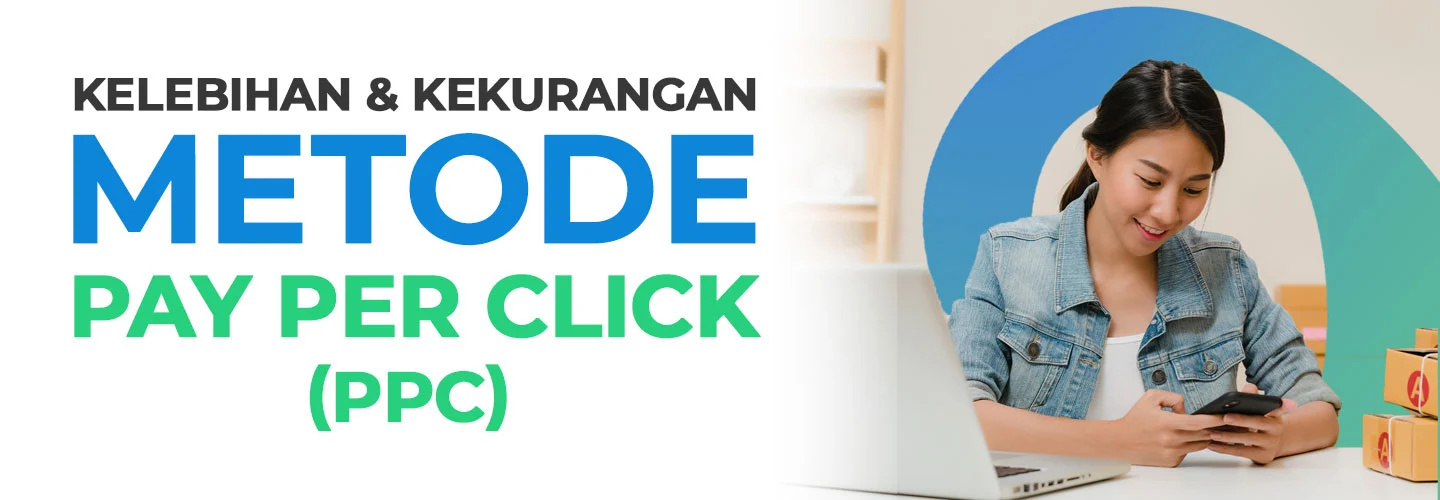Pay Per Click: Understand How to Plan and Manage a Successful Campaign

Pay per click (PPC) is one of the marketing strategies to promote your business. This strategy can generate traffic or visits to the website until sales occur.
PPC involves ads or online advertisements about your business that are displayed on search engines (for example Google) and social media (for example Facebook). Pay per click is also known as an effective online marketing method and requires low costs.
Interested in trying PPC, but don't know how to do it? Understand more about pay per click starting from how it works, advantages, disadvantages, examples, and how to run it below.
What is Pay Per Click?
Pay per click (PPC) is an online marketing strategy to promote your business using ads on Google and social media. The benchmark for PPC success is how many times your ads or ad links are clicked by users. You can determine the users or target audience who will see the ad.
In PPC, you can see metrics and data, then how to optimize your ads or business campaigns. The data and metrics can assess the return on investment (ROI) and make decisions based on data.
How to plan a PPC strategy and campaign
Some important ways and steps to plan your PPC strategy and campaign, citing Search Engine Land, are:
- Determine the target audience: determine the demographics of the potential audience or users for your ads, some things that can be determined are age, gender, location, interests, and others.
- Determine target metrics: determine the metrics you want to achieve with a PPC campaign, for example increasing traffic to your website, increasing online sales, or getting leads.
- Do keyword research: use keyword research tools to determine the words and sentences that your target audience uses to search for products or information related to the product. Use these keywords in your ad copy.
- Write compelling copy: create a unique headline or title and ad description to attract the attention of the audience to click and visit your website.
- Choose the right platform: some platform options for advertising include Google Ads, Microsoft Advertising, Meta Ads (for Facebook and Instagram), and others.
- Manage and optimize the campaign: use the metrics you have determined as an assessment of the success of the ad. Make optimizations or changes, if necessary, to achieve the target.
- Test ad formats and target audiences: try different ad formats (such as text, images, and videos) and experiment with different target audiences to find out which type of ad works best for them.
- Determine your budget: determine how much money you can afford to spend on your campaign.
Advantages and Disadvantages of Pay Per Click
Advantages of using pay per click:
- You can target multiple audience groups at once.
- Easy to measure and assess its success.
- So it's a step to get ahead of your competitors.
- The budget used is flexible (can be cheaper than your initial budget).
- Rely on marketing data that suits your business needs.
- The results can be seen quickly.
- Helps your business branding process.
- Supports SEO efforts on your site.
Disadvantages of using pay per click:
- You have to spend special time to manage PPC campaigns (including optimization).
- Requires special skills to use the advertising platform.
- You also have to pay additional costs if you use an advertising agency.
- Clicks and visits to the website do not necessarily result in sales.
- You have to optimize your site to ensure that the incoming audience is interested in buying.
PPC Campaign Example
Snickers Campaign
Reporting from Dutch, the snack product Snickers created a PPC campaign on Google Ads. They took advantage of typos or typos from users to promote their products. For example:
The strategy is when a user makes a typo, such as the word "business" becomes "business", then the text or copy of the Snickers ad that appears is: Business? You can't type correctly when you're hungry, eat Snickers.
The copy is very interesting because it directly targets the audience's condition when searching.
Converse Campaign
Converse's pay per click strategy prioritizes keywords that are not directly related to their products. In fact, there is no word converse at all in the targeted keywords.
They also use copy and microsites to direct the audience to their official website. Topics and keywords used include:
- First day of summer
- Spelling bee
- How to talk to girls
- How to kiss
How to Manage a PPC Campaign
Summarizing Word Stream, here are some ways to manage and optimize ongoing PPC campaigns:
- Continue to add keywords that are relevant to your business in PPC.
- Review the most expensive PPC keywords and measure their metrics.
- Improve your landing page or site that your audience will visit.
- Improve and change the copy in the title, description, and CTA.
- Create ad groups to increase the CTR (click-through rate) on the landing page.
PPC is an online marketing strategy that will help your business ads be seen by the right audience or potential consumers. The goal is to increase visits to the website to increase sales figures.
To master more about Pay Per Click and advertising science, you can learn more about digital marketing first.
You can register and take part in the prasmul-eli short program entitled Digital Marketing Fundamentals.
Digital marketing experts and professionals are ready to share their knowledge with you. Visit this page for a list of programs!
